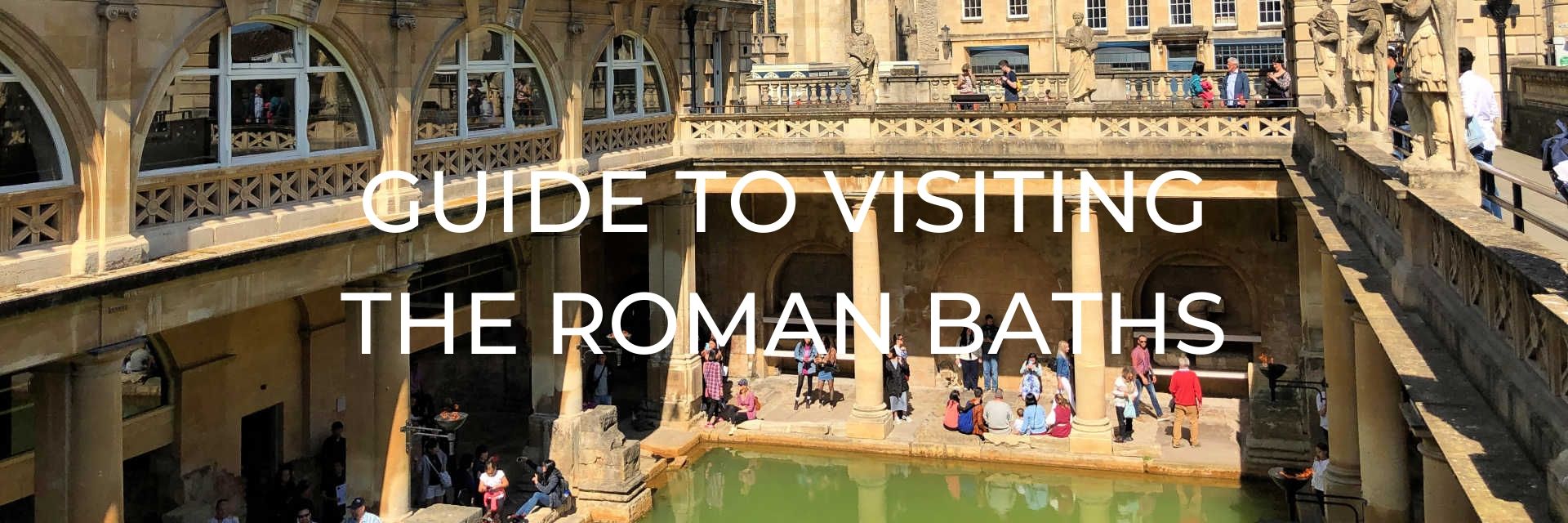
Is it possible to visit Bath without visiting the place that gave the city its name in the first place? We suppose it is, but we think you’d be missing out on some great history and architecture if you didn’t go to the Roman Baths so we’d highly recommend a visit to this really great site.
Want to save this for later? Click the Pinterest button on the left for a pinnable image!
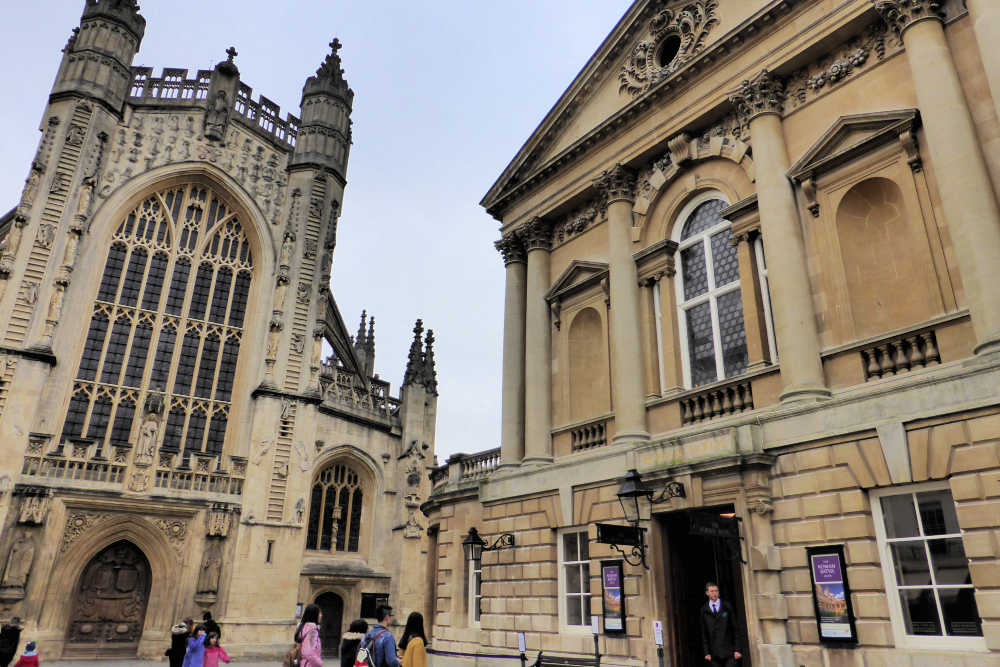
This post may contain affiliate links. Please read our full disclosure policy here.
Two traditions merged to create what is known today as the Roman style of bathing. One was the Greek public baths that had individual hip baths in heated rooms and cold water showers in their exercise halls. The other was Italian where the folks had small rooms, like saunas, in their farmhouses. These two styles came together in the 2nd century BC to create a leisurely approach to bathing that could take all afternoon and was an end in itself, not simply a way to get clean.
The hot spring that feeds the baths was known and worshipped to the goddess Sulis. When the Romans arrived in Britain they built a temple around the existing spring and a settlement grew up around it called Aquae Sulis. It is believed that locals cast curse tablets into the spring to request recourse for actions they felt aggrieved by. 130 of these tablets have been found in varying conditions.
The Roman Baths include, not only the Great Bath and Sacred Spring, but also heated rooms and cold plunge pools that visitors can view and learn more about how they heated these rooms.
READ MORE: Weekend Guide to Bath: 48-Hour Itinerary
HIGHLIGHTS OF THE ROMAN BATHS
Tours of the Roman Baths are self-guided with the included audio-guide. The audio-guide is available in 12 languages, with a guide just for children and another commentated by the author Bill Bryson.
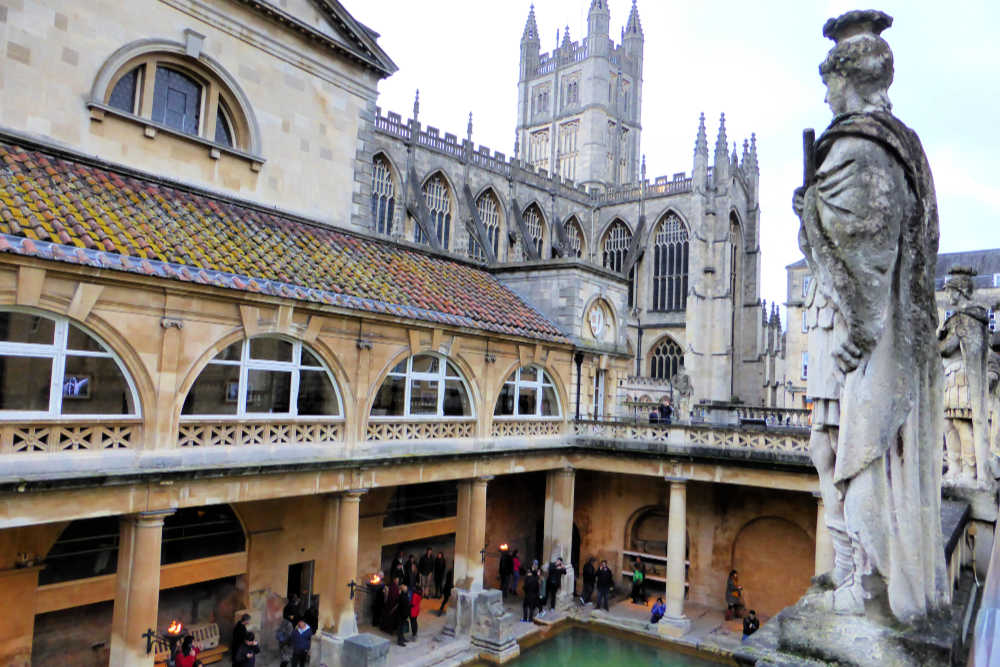
THE TERRACE
The terrace is lined with Victorian statues of Roman emperors and governors of Britain and they date back to 1894. Although my favourite view of the baths, the terrace really only allows you to see about a quarter of the whole site. Much of the Roman Baths extends under ground level, beneath the streets and squares nearby.
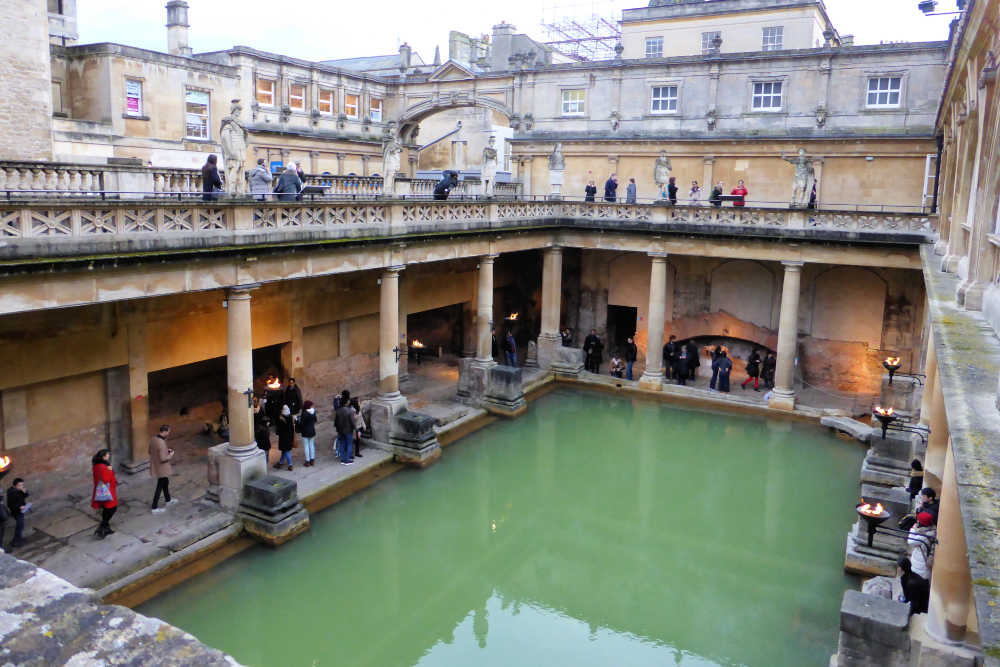
THE GREAT BATH
The Great Bath is lined with 45 sheets of lead and filled 1.6 meters deep with hot water from the springs. With little niches all around the sides, it would have been ideal for bathing as these would have held benches for the bathers and maybe even some small tables for food and drinks. During Roman times it was actually enclosed under a barrel-vaulted ceiling that was about 40 meters high.
With one look at the green water, many people probably wonder why anyone would want to bathe here. It doesn’t look very clean or particularly inviting but back in the day it actually wasn’t so green. With a roof over it, most of the sunlight would have been kept out and it wouldn’t have been quite the breeding ground for algae that it is today. Even though it is drained and cleaned frequently, the algae still builds up and gives it the characteristic green hue it has today.
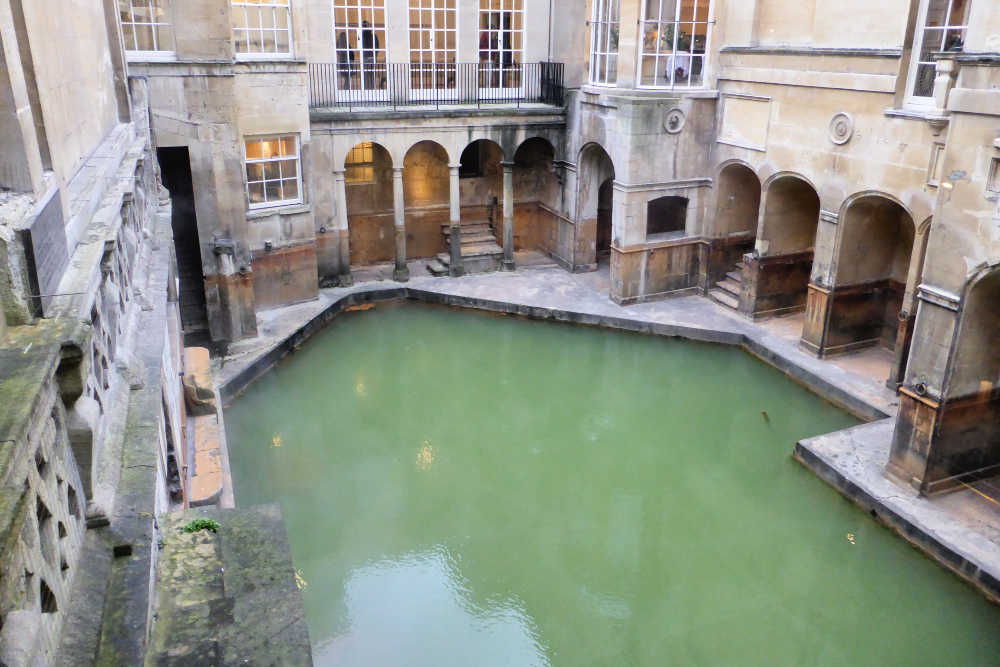
SACRED SPRING
Originally called Aquae Sulis, the town became known as Bath after the Romans moved in and created the firsts baths and temple buildings around the Sacred Spring in 76 A.D. Water temperatures in the Sacred Spring reach 46° C (114°F) and it was here that the spirit of the goddess Sulis Minerva dwelt and was worshipped. The local people also wrote curses about other people, for things like theft, on lead or pewter and threw these into the Sacred Spring to the goddess for her intervention with the thieves.
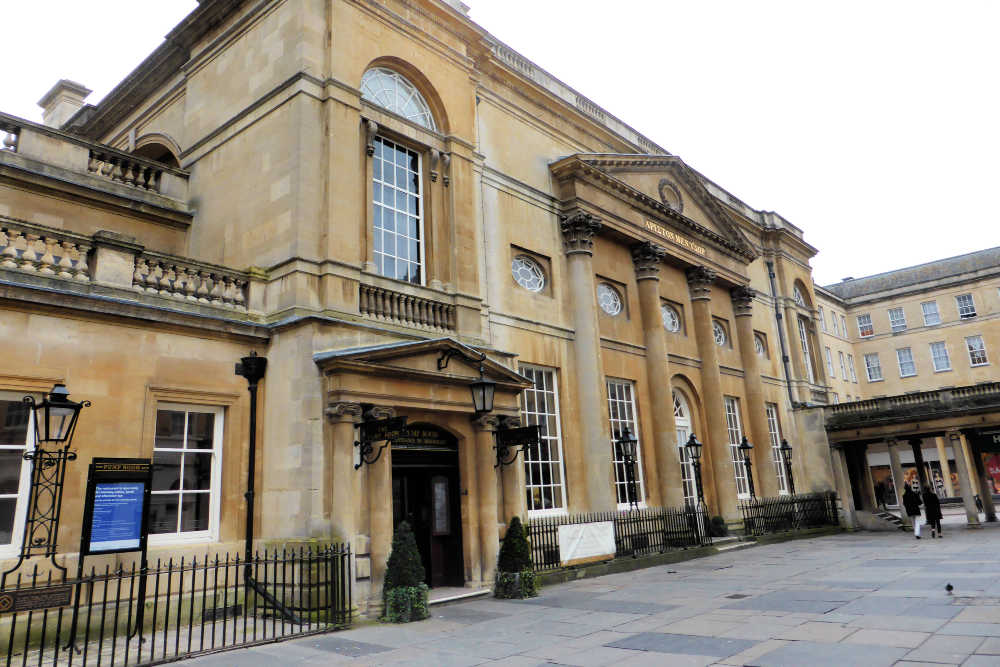
PUMP ROOM
The Pump Room was added on much later, in the 18th century, and includes steps, or “slips”, that allow bathers to enter the water from passages below the Pump Room. Today the Pump Room is home to one of Bath’s most elegant places for British dining, perhaps a great place to stop for afternoon tea.
Visitors can also try a drink of the hot spa water at the fountain in the Pump Room. It contains 43 minerals and has been used for healing purposes for two thousand years. No worries though, if you aren’t able to dine at the Pump Room you can still enjoy a cup of the spa water at the end of the tour of the Roman Baths. Some say it tastes terrible but I didn’t think it tasted that horrible. Definitely give it a try if you visit.
READ MORE: Looking for more great things to see and do in Bath? Check out these 21 things to do in Bath!
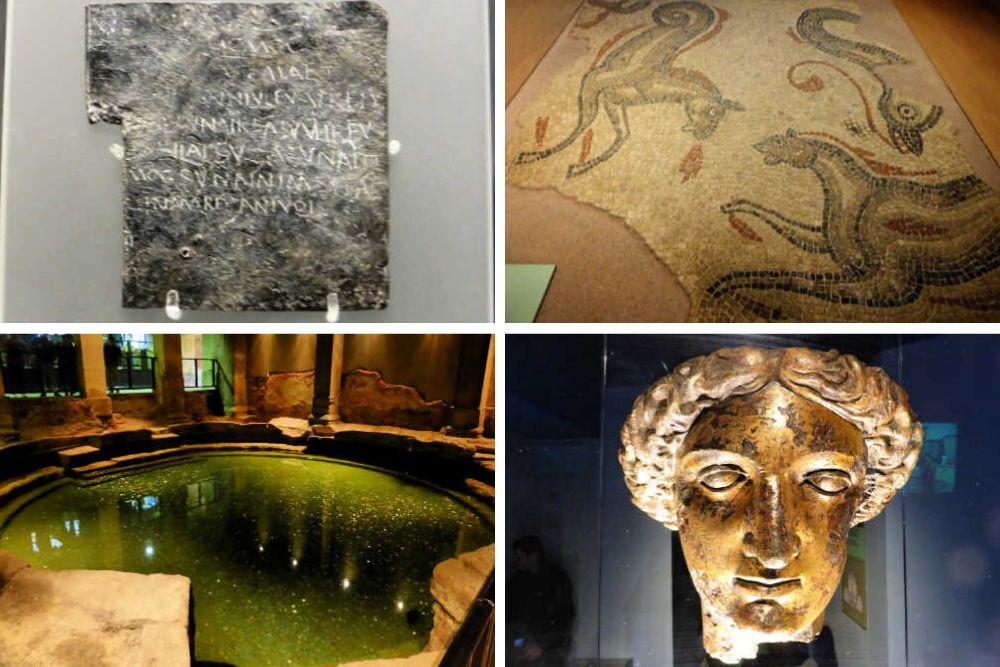
PLAN YOUR VISIT TO THE ROMAN BATHS
Information last updated December 2019
HOW TO GET THERE
The Roman Baths can be found at Abbey Church Yard, Bath, BA1 1LZ.
The nearest station is Bath Spa (Great Western Mainline) which is less than 10-minutes walk away. You can catch a bus (3, D1 discover or D3 discover) from the bus station outside Bath Spa to Guidhall which is just 1-minutes walk from the entrance to the baths.
Parking is available five-minutes walk away at Manvers Street Car Park. Parking is £1.60 per hour, with a minimum stay of two hours, up to £15 for 12 hours.
HELPFUL LINK:
- If you need an app that will navigate you around whether walking, driving or using public transport and even works offline then click for a guide about how to use Here WeGo.
OPENING HOURS
Opening hours vary throughout the year, but the core hours are 0930-1700 with earlier and later hours during high season, including late opening until 2100 in the summer. The baths are closed on the 25th and 26th December. For full opening times please check here.
As most of the attraction is indoors or at least undercover, any time of year is a good time to visit, only the terrace is exposed to the elements. We would recommend you allow at 90-minutes to two hours to fully explore the baths.
HOW TO BUY TICKETS & SAVE MONEY ON ADMISSION
Basic admission prices vary based on the season and whether you visit on a weekday or weekend. Basic prices range between £16-£23 for adults, £8.50-£15.50 for children 6-18 years and £21.50 for over 65s and student visitors. Family tickets for 2 adults and up to 4 children are £41-£63 and for one adult and up to 4 children £28.50-£45.50. One carer per disabled visitor can visit for free.
Museum saver prices which include admission to the Fashion Museum and Victoria Art Gallery are £26 for adults, £16 for children 6-18 years, £24.50 for over 65s and student visitors. Family museum saver for 2 adults and up to 4 children are £70 and for one adult and up to 4 children £49. This makes the museum saver a much better deal during high season!
You can save 10% on any ticket price by purchasing online in advance.
ACCESSIBILITY
90% of the site is accessible, but to access all areas you will need to climb steps. Access to the lower museum and the baths is via accessible lifts.
For full accessibility details please visit the Roman Baths Accessibility page.
ARE THE ROMAN BATHS WORTH THE VISIT?
The Roman Baths are the heart of the history of Bath and as such should definitely be on a visitors itinerary. There is much to see at the site beyond the great bath that you’ll see in all the pictures. Learning about the history of how the site was used as well as viewing the many artefacts that have been found in the museum is fascinating. The audio-guide is full of detail and hearing Bill Bryson’s take on the baths is a joy for fans of his work.
See what others think of this attraction on Trip Advisor.
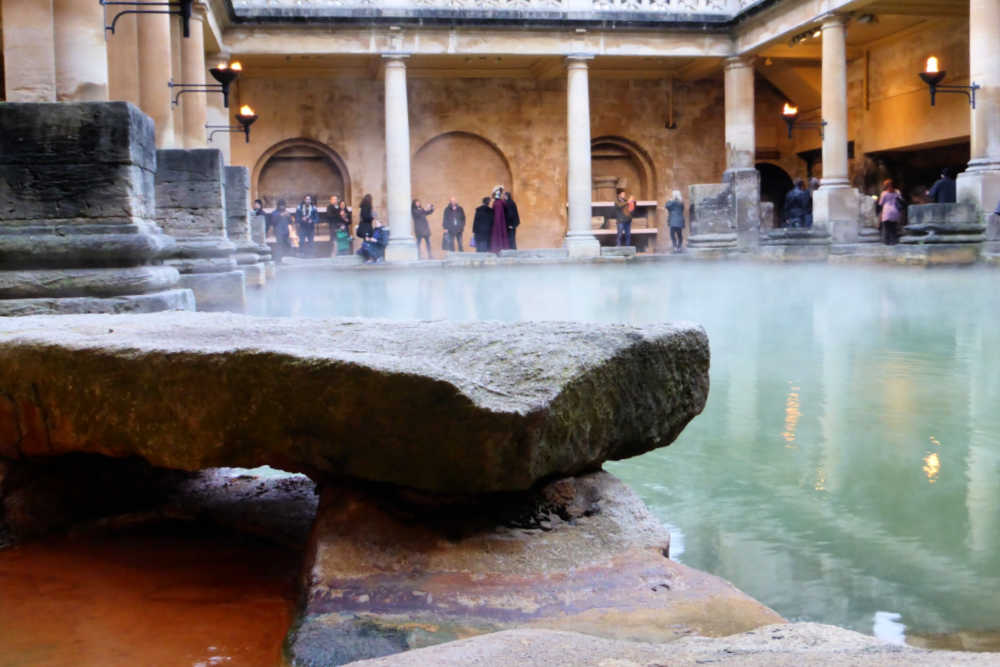
ADD TO YOUR BATH ITINERARY
Bath is most famous for the Roman Baths that the town is named for; heated from a natural spring with purported healing properties. The entire city was inscribed on the UNESCO World Heritage List in 1987 for its Roman remains and classic Georgian architecture. Visitors today can explore this compact elegant city and its many attractions.
- The free walking tour of Bath conducted by The Mayor of Bath’s Corps of Honorary Guides is easily the best value thing to do in Bath. Take a two-hour walk around this amazing UNESCO city with expert guides.
- With its stone depiction of Jacob’s Ladder on the west front, Bath Abbey is one of the most famous and beautiful things to see in Bath.
- Experience how Bath’s residents would have lived in the late 18th Century with a visit to No 1 Royal Crescent.
-
For a modern take on a Roman Bath, visit the Thermae Baths with their open-air rooftop pool filled and heated with the natural spring water the Romans would have used.
- Walk across the much-photographed Pulteney Bridge, though you won’t know you are on a bridge, as it has shops on both sides across the whole width of the bridge!
Want to save this for later? Click the Pinterest button on the left for a pinnable image!
RESOURCES | PLAN YOUR TRIP TO BATH
To book flights, rental cars, accommodations, and activities for your trip, please check out our recommended travel providers, favourite apps and websites.
Some of the links in the post above are affiliate links. This means if you click on the link and purchase the item, we will receive an affiliate commission but this does not affect the price to you. Please read our full disclosure policy here.
